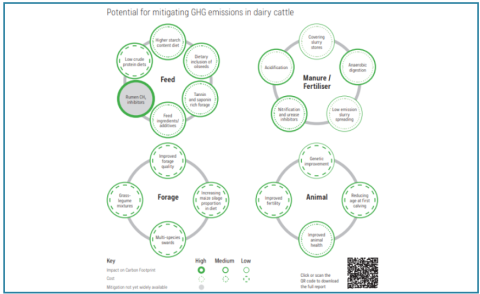Farmers are aware that the agricultural industry still needs to do more to meet Net Zero targets.
To support this journey of change, in 2022 we launched the first practical guide for dairy farmers to help reach Net Zero using the insights shared in CIEL’s report – Net Zero & Livestock: How farmers can reduce emissions.
Download your practical guide on how dairy farmers can reduce emissions.
Here are seven practical steps dairy farmers could take to help them achieve Net Zero:
1. Complete regular carbon audits
Completing regular carbon audits on-farm can help to establish a baseline and identify key areas where farmers can reduce carbon footprint. Using a reliable carbon calculator is recommended to help advise how practices can be developed to benefit the environment.
2. Maintain good herd management
A healthy herd is a productive herd. Ensuring a high-health status for your herd is maintained will improve production efficiency – sick cows cost time and money to treat while producing less milk.
3. Focus on genetic improvement
Genetic improvements can help reduce emissions when focused on component traits, especially when you focus on the following:
- Cow size
- Feed efficiency
- Fertility
- Health
4. Maintain or enhance sward productivity
Planting multi-species swards, which include legumes, can help to reduce the need for fertiliser. They can also help improve soil health and fertility further improving farm productivity.
5. Improve quality of forage
It’s recommended that farmers focus on improving forage quality through measures such as harvesting forage early where possible, managing grazing rotations to increase grazing frequency and decreasing the regrowth interval. Increasing the amount of milk produced from forage will help reduce the need to buy in feed.
6. Consider carbon footprint of feed components
The main source of nitrogen obtained by livestock is dietary protein. Less nitrogen will be excreted, and less ammonia will be produced from the slurry, if dietary protein is balanced to match requirements. A nutritionist will be able to support with any ration changes to ensure performance is maintained.
7. Adapt approach to storing manure or slurry
Slurry stores allow ammonia to escape into the atmosphere. Putting a cover over the store can help reduce ammonia emissions meaning more nitrogen is retained, increasing its fertiliser value.
Download your practical guide on how dairy farmers can reduce emissions.


